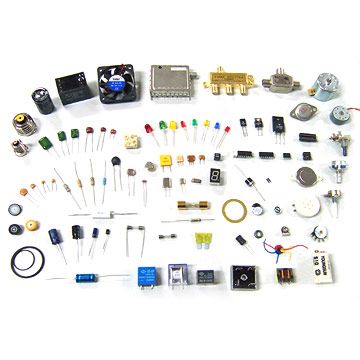Circuits are the backbone of modern technology, enabling the flow of electric current and powering our everyday devices. Understanding the different types of circuits is essential for engineers, technicians, and enthusiasts alike. In this comprehensive guide, we will delve into the intricacies of circuits, exploring the five main types and their applications. So, let's embark on this electrifying journey!
- Series Circuits:
A series circuit is a linear configuration where components are connected end-to-end, forming a single pathway for current flow. In this type of circuit, the same current passes through each component, making it an ideal choice for applications requiring equal current distribution. Series circuits are commonly found in holiday lights, flashlight bulbs, and electronic appliances. - Parallel Circuits:
Unlike series circuits, parallel circuits offer multiple pathways for current flow. Components in a parallel circuit are connected side by side, allowing independent current flow through each. This configuration ensures that if one component fails, others can continue to function. Parallel circuits are widely used in household wiring, electrical outlets, and complex electronic systems. - Combination Circuits:
As the name suggests, combination circuits combine elements of both series and parallel circuits. They are often used in practical applications where a mix of current distribution and independent pathways is required. Combination circuits can be found in automotive electrical systems, power distribution networks, and advanced electronic devices. - RC Circuits:
RC circuits, also known as resistor-capacitor circuits, involve the interaction between resistors and capacitors. These circuits are widely used in electronic filters, timing circuits, and signal processing applications. The resistor controls the flow of current, while the capacitor stores and releases electrical energy. Understanding RC circuits is crucial for designing precise timing mechanisms and frequency-dependent circuitry. - Integrated Circuits:
Integrated circuits (ICs) revolutionized the field of electronics by miniaturizing complex circuitry onto a single chip. ICs are composed of numerous electronic components, such as transistors, resistors, and capacitors, etched onto a semiconductor material. They are the building blocks of modern electronic devices, including computers, smartphones, and medical equipment. Understanding the different types of ICs, such as microprocessors, memory chips, and amplifiers, is essential for electronic design and development.
Conclusion:
Circuits form the foundation of modern technology, and a comprehensive understanding of their types and applications is crucial for anyone working in the field of electronics. In this article, we explored the five main types of circuits: series, parallel, combination, RC, and integrated circuits. Each type has its unique characteristics and applications, contributing to the diverse world of electrical engineering. By mastering these circuit types, engineers and enthusiasts can unlock endless possibilities and continue to innovate in the ever-evolving realm of electronics.
About Author
You may also like
-
Thermal Design Challenges and Solutions in High-Performance Core i9 Mini PCs
-
How Repair Shops Can Improve Customer Satisfaction by Choosing Afterimage-Resistant Replacement Screens
-
Why Micro Gimbal Camera Technology Is Changing the Way You See the World
-
Why GNSS Modules Are Essential for Modern Surveying and Industrial Projects
-
Why a Leisure Cycling Helmet Matters: Key Differences from Road, Racing, Mountain, and Commuter Helmets

